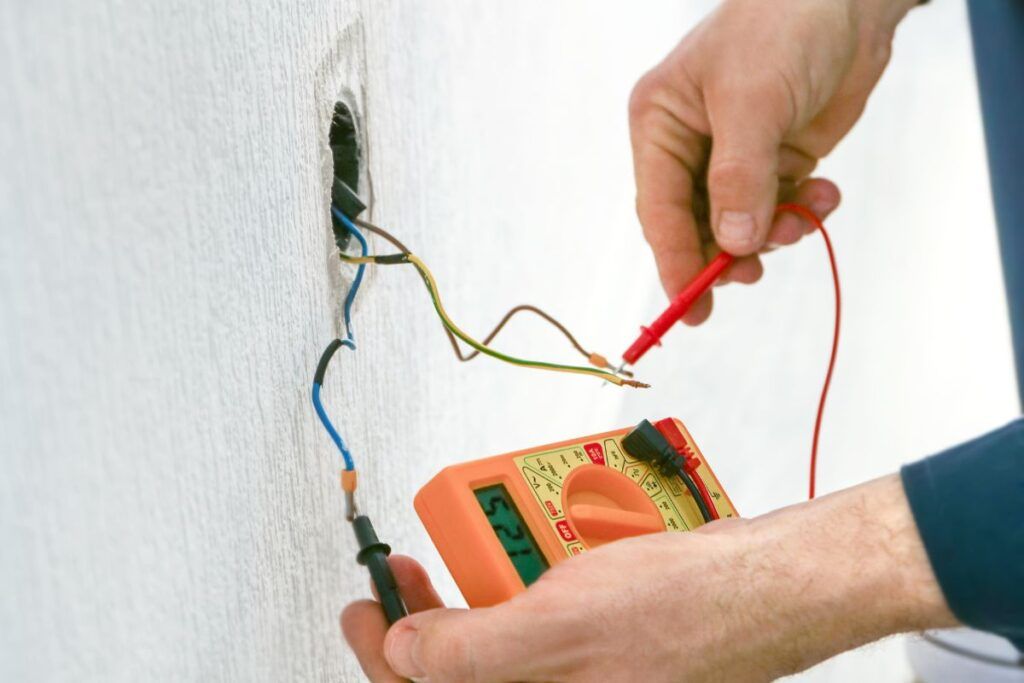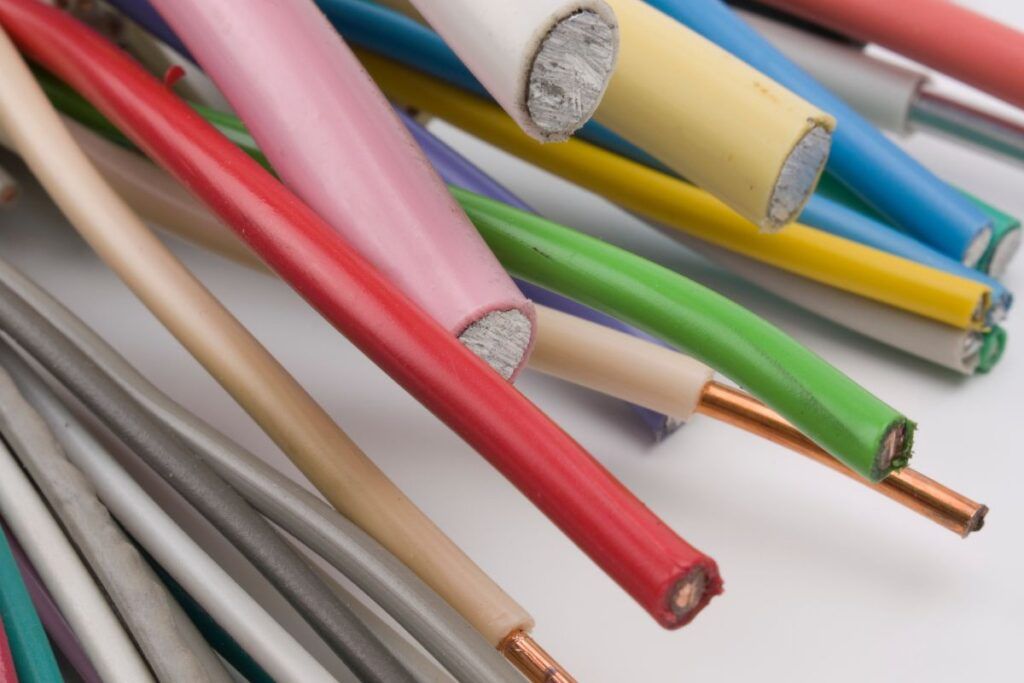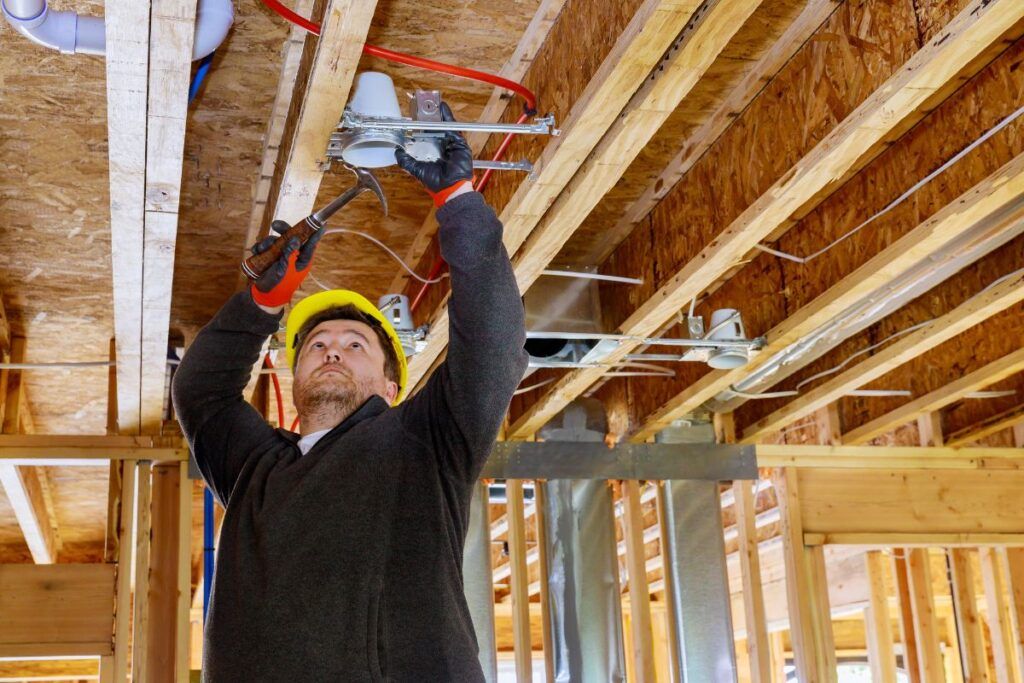Different houses have circuits with different amps. The right wire gauge is important as it carries the amp safely without overheating. A 14 gauge wire is common to use. But how many amps can it handle without overheating? Let’s find it out.
As a general rule, A 14-gauge wire will carry up to 15 Amps of power without overheating. It is recommended to always stay within the maximum load capacity of 15 Amps, as overloading the wire can lead to problems like short circuits, melting of insulation, and fire hazards.
You can mix a 12 gauge wire with 14 if the circuit is 15 amps. This article has every detail about the amperage capacity of the 14 gauge wires, the factors, and the results behind the amp exceeding 15.

Check out our list of top-handpicked products for all your electrical, appliance, and HVAC system needs to keep your home running smoothly.
This post includes some affiliate links.How many amps can a 14 gauge wire handle?
The best amp to be handled by the 14 gauge wires is 15 amps.
The wires will safely handle 15 amp without any overheating problems.
These wires are generally designed for 15 amps only.
Thus, connecting these wires with the right amp circuit will allow the current to flow smoothly and operate perfectly.
Appliances that contain 15 amps of current are lamps, fixed lighting devices, and circuits with light fixtures.
A lower-capacity gauge will melt and burn the circuit and wire and destroy the appliances.
Sometimes, lights are connected to a separate circuit at 15 amps and powered by 14 gauge wires.
This procedure allows you to have continuous lights in your home when your home circuit fails.
It is crucial to control the light fixtures in the 15 amp circuit as it will overload the circuit and lead to dangerous issues.
To avoid such dangers, you must maintain the limit of the circuit.
The rated load should not cross 80%, which is 12 Amps in this case.
Will a 14 gauge wire handle 20 amps?
A 14 gauge wire is not designed for 20 amp loads.
The 20 amps will draw excessive currents, which becomes intolerable for the 14 gauge wires.
As a result, it will overload the wire and result in melting, short circuit, explosion, and fire hazard.
Electrical fires can be very dangerous to handle.
So, using 14 gauge wires in 20 amp loads is not recommended.
However, in certain circumstances, 14 gauge wires can carry 20 amps to some extent.
But, even if you use copper wires here, the wire will get overheated after some time.
Besides, using 14 gauge wires for 20 amps is not legal.
If you force the 14 gauge wires to handle 20 amps, it will harm the wires, the circuit, and the appliances connected to the circuit.
10 or 12-gauge wires are the best for 20 amp loads.
Can a 14 gauge wire handle 30 amps?

The safe wire gauge for 30 amps is 10 gauge wire.
Using a 14 gauge wire will cause power failure, melt the wire and start a fire.
The 30 amps draw an excessive amount of currents which becomes impossible for the 14 gauge wires to handle.
The wire will overheat and create a short circuit.
The breaker will keep tripping and cut off the power.
In worse conditions, the wires will melt and explode.
Some houses have appliances with 30 amps, like water heaters, cloth dryers, and 240V air conditioners.
If you use 14 gauge wires, the appliances keep tripping like the breaker.
To avoid such accidents, you need to find the exact size for 30 amps and use them. 10 gauge wire will be a good choice.
Confirm that the wire you have chosen can handle the amperage you want to use.
What about 40 amps?
Keep 14 gauge wires away from 40 amps.
The best wire size for 40 amps is 4 or 8. Using 14 gauge wires for 40 amps will burn the wire, melt the circuit, and cause a serious explosion and fire hazard.
The amount of power drawn by the 40 amps will overheat the 14 gauge wires in no time and start melting the insulation.
The breaker will keep tripping.
Even if you use copper wires, it won’t save you from electrical accidents.
There is a huge difference between 8 gauge and 14 gauge wires.
The 8 gauges are designed for higher amps like 40.
But, 14 gauge wires are only limited to 15 amps.
So, using 14 gauge wires for 40 amps wastes money.
Some home appliances like electric cookers and cooktops carry 40 amps.
Never use 14 gauge wires for these devices.
Your appliances will trip.
How many amps will 14 gauge wire handle at 120 volts?
A 14 gauge wire has to handle at least 20 amps at 120 volts.
Since 20 amp is not safe for the 14 gauge wires, it is better not to use these wires at such voltages.
You can use a 12 gauge wire to run a load with 20 amps at 120 volts.
Some appliances with 120 volts are dishwashers, microwaves, and refrigerators.
These work well at 120 volts supporting 20 amp.
The only problem with using higher gauges like 10 or 12 is that they are thicker and larger.
So they might not fit well. That is why people consider using 14 gauge copper wires.
However, using 12 gauge wires for such appliances and amps is safer.
What factors to consider for 14 gauge wires?
It is not safe to use 14 gauge wires for 20 amp circuits.
You can use them if you want, but the result will be very bad.
The wire material and temperature rating highly matter when you decide on the amp for 14 gauge wire.
Temperature and wire material go side by side.
Let’s talk about them one by one.
Temperature
The amp you use for 14 gauge wires must not overheat the wires.
The temperature rating should not exceed the rated load of 80%.
If that happens, the wires will start melting, creating an explosion and fire hazards.
The 14 gauge wires at 140°F will handle 20 amps.
At a temperature rating of 167°F, the 14 gauge will carry 20 amps.
At 203°F, the 14 gauge wire will carry 25 amps.
The ampacity will remain the same despite the rise in temperature rating.
But it jumps to 25 amps when the temperature suddenly rises to 203°F.
If the amperage increases, the temperature of the wire will also increase.
By this, you can understand how the amperage affects the temperature.
Wire material

Three types of wires are mostly used for electrical purposes:
- Copper
- Aluminum
- Copper-clad aluminum
Copper wires are better in conductivity, durability, and resistance.
The wires do not overheat despite carrying loads of currents.
Besides, the wires do not expand or contract, thus allowing the current to flow smoothly without interruption.
But, aluminum wires overheat within a small time due to high resistance.
The wires contract and expand too much, thus interrupting the smooth current flow.
But since aluminum is cheaper than copper, many people prefer aluminum over copper.
But coppers are the best.
Copper-clad aluminum is also a good option.
It has some copper fittings, which gives the wires some copper benefits.
You can use the 14 gauge wires for 15 or 20 amps if you use copper wires.
But, if you are using aluminum or copper-clad, stick to 15 amps and do not think of exceeding.
Since temperatures and wire material come hand in hand, check the temperature rating of the different wires at different amps.
If you use 14 gauge copper wires:
- At 20 amps, the temperature rating of the wire will be 140°F and 167°F.
- At 25 amps, the temperature of the wire will be 203°F.
It is more or less the same in the aluminum or copper-clad aluminum wires.
The wires will have the same ampacity at 140°F and 156°F.
But the ampacity jumps to 25 amps when the temperature rises to 203°F.
If the amp increases, so will the temperature.
The best type of wire is copper wire.
You can use the copper wire in 20 amps at your own risk, and it is always better to use the 14 gauge wires in 15 amps.
How far can I run a 14 gauge wire at different voltages?
If you have 120 volts of circuits, you can use the 14 gauge wires up to 50 feet before the voltage drop.
If the circuit is 240 volts, the distance will be 100 feet.
The voltage drop occurs when the wire travels extended distances.
Resistance, power, heat – everything will affect the voltage drop.
When the distance exceeds 50 feet from a 120-volt circuit using a 14 gauge wire, the voltage drop will be around 3.3%.
At 240 volts, the distance will be 100 feet, and the voltage drop will be around 6.6%.
So, at 120 volts, the voltage will drop to 116.04 volts after the drop.
At 240 volts, the voltage will fall to 232.08 volts after the voltage drop.
If the distance increases, so will the voltage drop.
The best voltage drop for a 14 gauge wire will be 3%.
And the distance will be 50 feet.
You cannot use 14 gauge wires for longer distances.
Where can you use 14 gauge wires?

A 14 gauge wire can tolerate only 15 amps.
So, you cannot use the wire for kitchen and bathroom appliances.
You can try them for outlets and lights.
You can use 14 gauge wires for light fixtures, circuits, and outlets connected to a 15 amp circuit.
It would be best to use the wires depending on the number of outlets in the circuit.
The 14 gauge wires are not very flexible.
So, the wire might face difficulty holding slightly heavy-duty equipment for a long time.
The 14 gauge wires are only 1.63 mm thicker, which means they are 21% thinner than the 12 gauge wires.
So, the wire will have higher resistance, thus leading to overheating.
The places where you can use 14 gauge wires are:
- Indoor and outdoor lighting
- 15 amp outlets serving TV games consoles, soundbars, printers, cable TV boxes, laptops, and mobile chargers
- Doorbells
- Ceiling fans
- Smoke detectors
Can I mix 12 and 14-gauge wires?
It is not recommended to join the two wires together.
Since these two gauges have usages in different amps, mixing them will cause a short circuit, overheating, wire melting, and fire hazards.
But, on one condition, you can mix them.
Using a 15 amp circuit, you can join both wires.
The 12 gauge wires are ideal for 20 amps, and the 14 gauge wires are ideal for 15 amps.
So, the 15 amp circuit will protect the 14 gauge wires.
But, if you connect them in a 20 amp circuit, the 12 gauge wires will remain safe.
Still, the 14 gauge wires will overheat, and their insulation will start melting due to excessive current flow.
The rule is to join them in a circuit that can support and protect the weaker wire gauge.
Here, the 14 gauge wire is weaker than the 12 gauge wire.
So, the ideal circuit for joining 12 and 14 gauge wire is 15 amp.
Also read:
Final thoughts
The best amp for a 14 gauge wire is 15 amps. The wire will easily handle the current flowing in this amperage. Do not use the 14 gauge wires in circuits exceeding 15 amps. Avoid 20, 30, and 40 amps.
Sometimes, you can use it for 20 amps, but it should be your responsibility if anything wrong happens. Even if you use copper wires, considered the best wires for carrying enough electrical loads, the wires will heat up after some time.
When it is to electricity, staying away from heat is the best way to stay safe. Though the amp differs depending on the wire material and temperature, not too much difference appears.
Mixing the 12 and 14-gauge wires in the same circuit is unsafe, especially if the circuit is 20 amps. However, doing this in a 15 amp circuit is fine.
Data Source: National Electrical Code, NEC Wire Table, Electrical wiring, Home wiring.


